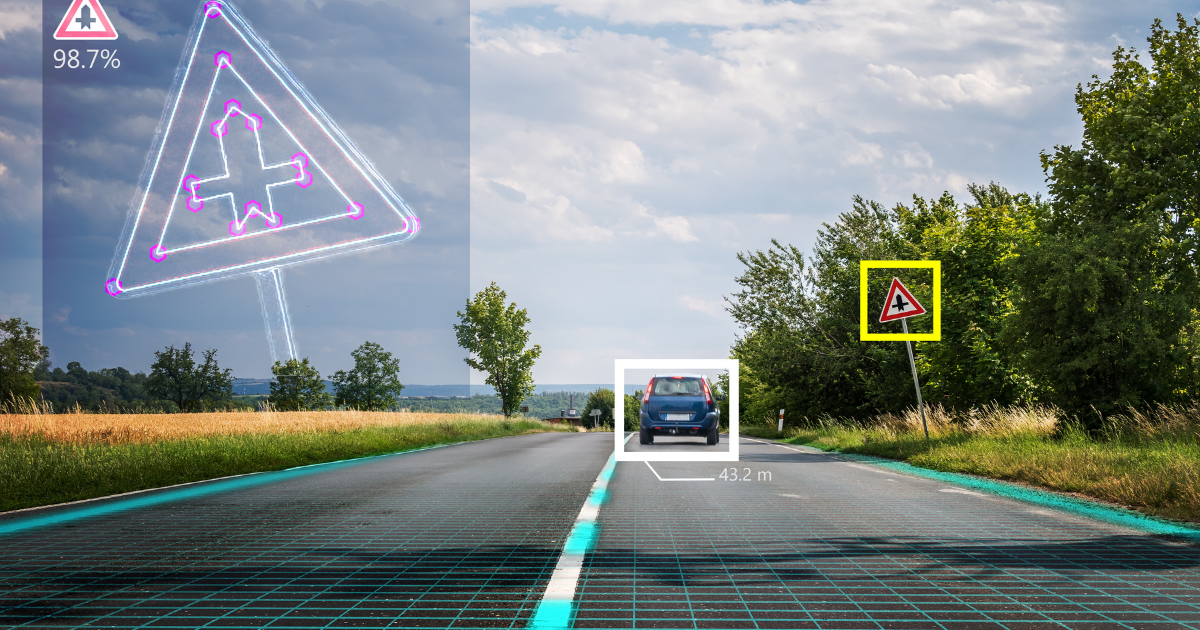Leveraging Computer Vision, The Next Generation of Business Intelligence (BI)

Turning data into something actionable is one of the greatest challenges a real estate organization faces. In real estate data analytics, we must ask the question: How can this data be aggregated in such a way to provide clarity for a specific use case?
Computer Vision
Perhaps one of the most exciting and yet confusing technologies we have recently come to embrace is computer vision analytics. Computer vision is an interdisciplinary scientific field that deals with how computers can gain high-level understanding from digital images or videos. It has affected almost every aspect of our lives without us even realizing it. Some of the more common business applications include Amazon Ghost Stores and Tesla vehicles that navigate the world using computer vision. The medical field has even begun using this technology to detect and monitor cancer cells.
With computer vision, a computer is trained to detect things in images and/or videos. In the CV & AI industry, this is referred to as training on images and creating layers of what is called a JSON file. A JSON file is created by a small computer behind the camera, or Network Video Recorder (NVR), that is running inference on each image.
In the image below, the dots are points that have been detected on the image. They are trained as a series of points on the image to detect for the classifier. The more detailed classifiers have multiple layers.
Each layer of the JSON file provides a more accurate level of fidelity, or accuracy of the read the JSON file was able to provide, based upon the position and quality of the camera. As soon as the JSON file identifies the image, the actual video image is dumped and only the result is sent out, such as a candy bar, a logo, a cancer cell, a person, a dog, or a vehicle plate for toll booths.
JSON file example:

Many people assume the image is tied to the object and thus the privacy and security of the data becomes a primary concern. This misunderstanding of how the technology functions is possibly one of the main reasons that computer vision has not been more extensively adopted for commercial purposes; there is a lack of clear understanding of how the technology works. To add to this confusion, at present, only fifteen states even have regulation on this technology with very little consistency.
Computer vision becomes part of the ecosystem of analytics we already have or may need. It is very broad in its application and there are literally millions of applications it can be used for now. From counting people, cars, license plates, medical, demographics, and so on.
Following are some business applications:
Tenant Mix
One example is when building management analyzes their portfolio to better understand the tenant mixes that are most successful for affinity shoppers. Which tenant combinations make each stronger and which one have a negative impact? By utilizing machine learning technologies including computer vision and natural language processing, these types of questions can be answered. Looking at which stores shoppers visit, visitor demographics, and social media activity, etc., we can mine the information to develop a picture of how tenants are performing, what tenant cross traffic occurs, and what tenants have similar social media postings. While this is a simplistic view of what is possible, it highlights how the data becomes a powerful tool in identifying which tenants to pursue and how the tenant fits into the property mix.
Tenant Issues
Conversely, that same data can identify tenants that are having issues and may need an intervention, or tenants that property managers may want to avoid or potentially replace at other properties. For example, in one case, after processing data from social media networks on the tenant locations in a portfolio and then mining the posts made by visitors, a correctable issue with a restaurant surfaced. Property management discussed the issues with the tenant who was able create and implement a plan to reverse the trend of negative reviews.
Combining Different Data Types
A company’s intelligence can grow rapidly by combining multiple data sources. For instance, combining historical weather with footfall data builds a much more accurate model of how and when people use the property. Although many systems include weather as a data point, further analysis is required to quantify the impact that weather has on a property’s foot traffic. When the data is collected and stored for the property, modern machine learning techniques can easily build predictive models that are accurate within several percentage points. The analysis doesn’t stop there. Leveraging these power models allows managers to evaluate the effectiveness that events have in driving visitor traffic and dwell time. Models can even be used to redefine operating hours and required staffing.
Sharing Data Between Silos
Another method of increasing a company’s intelligence capital is to ensure the data resources are shared across teams. As many real estate companies employ a divisional organizational structure, it is natural for data to become siloed within the team acquiring it. As the company grows, so does the segmentation of data resources. An effective solution for this unintended problem is to actively empower a cross-functional team who can navigate the various teams, take inventory of data resources, and provide a central location for data storage. This team may be led by a data officer or skilled project manager.
It’s Happening, Like it or Not!
Globally, computer vision has been widely adopted and accepted. In the U.S., the real estate industry has largely been slow to adopt this exciting new technology as part of its analytics infrastructure because of privacy concerns and public perception around the use of computer vision. Any technology, when implemented without guidelines and serious consideration, can quickly become problematic. It is important for all parties to understand the capabilities of the technology, what data is being used, how it is being saved, how the different regulations impact the use of the technology, and to ensure that data governance policies exist and are followed throughout an organization.
Data exists everywhere to help you understand your customer, your properties, your tenants, your visitors, and your business. Having the correct tools and knowledge to use the data will help you to keep up with the ever-changing tides of the business world we live in at a time when it is more critical than ever.
Industry topics such as business intelligence, data, emerging tech trends (such as computer vision) and others will be presented by thought leaders at Realcomm | IBcon 2021. The event will be held at the Westin Kierland Resort in Scottsdale on Nov. 2-3 (Oct. 31: Golf Outing & Sports Activities | Nov. 1: Precon). Register today!
This Week’s Sponsor
Yardi® develops and supports industry-leading investment and property management software for all types and sizes of real estate companies. Established in 1984, Yardi is based in Santa Barbara, Calif., and serves clients worldwide. For more information on how Yardi is Energized for Tomorrow, visit yardi.com.
Read Next
 5/29/2025
5/29/2025
AI Can’t Fix Bad Data. These Ideas Can Get You on the Right Track. Real estate visionaries constantly integrate innovative technology to make their organizations more efficient.
 5/22/2025
5/22/2025
Managing Building Automation and Integration Like an Investment Portfolio What if your building automation and integration decisions were managed with the same precision, discipline, and long-term vision as Warren Buffett’s investment portfolio?
 5/15/2025
5/15/2025
Tech, Talent and Transformation: 2025 Digie Finalists Announced For 27 years, Realcomm has presented the Digie Awards to acknowledge companies, real estate projects, technologies, and individuals that have advanced the commercial real estate industry through the strategic use of technology, automation, and innovation.
 5/15/2025
5/15/2025
Empowering Space Management with Data-Driven Visualization For effective CRE space management, it’s critical to centralize lease data, maximize rental square footage (RSF), improve energy efficiency and reconfigure spaces to meet changing needs.









%20(1)%20(1)%20(1).png)



